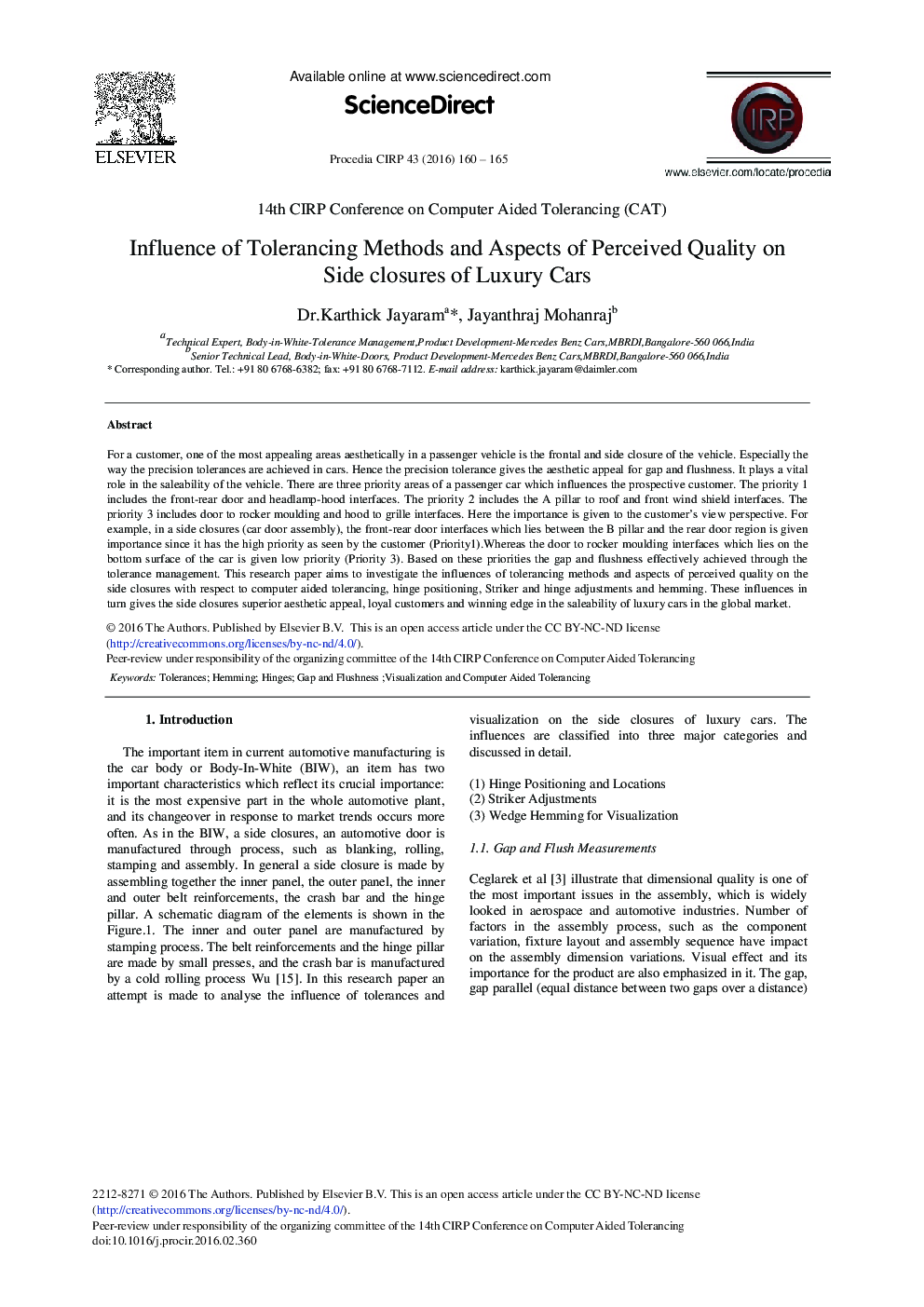| کد مقاله | کد نشریه | سال انتشار | مقاله انگلیسی | نسخه تمام متن |
|---|---|---|---|---|
| 1698760 | 1519309 | 2016 | 6 صفحه PDF | دانلود رایگان |

For a customer, one of the most appealing areas aesthetically in a passenger vehicle is the frontal and side closure of the vehicle. Especially the way the precision tolerances are achieved in cars. Hence the precision tolerance gives the aesthetic appeal for gap and flushness. It plays a vital role in the saleability of the vehicle. There are three priority areas of a passenger car which influences the prospective customer. The priority 1 includes the front-rear door and headlamp-hood interfaces. The priority 2 includes the A pillar to roof and front wind shield interfaces. The priority 3 includes door to rocker moulding and hood to grille interfaces. Here the importance is given to the customer's view perspective. For example, in a side closures (car door assembly), the front-rear door interfaces which lies between the B pillar and the rear door region is given importance since it has the high priority as seen by the customer (Priority1).Whereas the door to rocker moulding interfaces which lies on the bottom surface of the car is given low priority (Priority 3). Based on these priorities the gap and flushness effectively achieved through the tolerance management. This research paper aims to investigate the influences of tolerancing methods and aspects of perceived quality on the side closures with respect to computer aided tolerancing, hinge positioning, Striker and hinge adjustments and hemming. These influences in turn gives the side closures superior aesthetic appeal, loyal customers and winning edge in the saleability of luxury cars in the global market.
Journal: Procedia CIRP - Volume 43, 2016, Pages 160–165